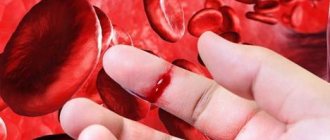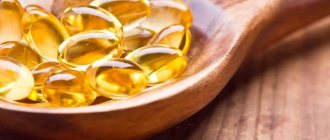About the benefits of flaxseed and flaxseed oil in the human diet
Flaxseed is one of the oldest crops, cultivated since the beginning of civilization. The Latin name for flaxseed is Linum usitatissimum, which means “very useful.” Flax was first introduced to the United States by colonists, primarily to produce fiber for clothing. Every part of the flax plant is used commercially, either directly or after processing. The stem produces good quality fibers with high strength and durability. Until the 1990s, flax was used primarily for textiles (flax) and paper, while linseed oil and its by-products are used in animal feed formulations. In the past two decades, flaxseed has been the focus of increased interest in dietary research due to the potential health benefits associated with some of its bioactive components. Flax seeds are highly nutritional and a rich source of Omega-3 fatty acids: α-linolenic acid (ALA), short-chain polyunsaturated fatty acids, soluble and insoluble dietary fiber, phytoestrogenic lignans (secoisolariciresinol diglycoside-SDG), protein and a variety of antioxidants . Its growing popularity as a food product is due to its health benefits in reducing cardiovascular disease, reducing the risk of cancer, especially breast and prostate cancer, anti-inflammatory activity, laxative effects and reducing symptoms of menopause and osteoporosis. Flax seeds are available in two main varieties: brown and yellow (golden). Both have similar nutritional profiles and the same amount of short-chain omega-3 fatty acids. The exception is a type of yellow flax called solin (trade name Linola), which has a completely different oil profile and contains very few omega-3 fatty acids. Brown flax is best known as an ingredient in paints, varnishes, fibers and cattle feed. There are various edible forms of flax available in the food market: whole flaxseed, ground flax, roasted flax, and flaxseed oil. According to its physicochemical composition, flaxseed is a multicomponent system with biologically active plant substances such as oil, protein, dietary fiber, soluble polysaccharides, lignans, phenolic compounds, vitamins (A, C, F and E) and minerals (P Mg , K, Na, Fe, Cu, Mn and Zn)
Benefits of flax seeds
Flax seeds help with problems with the digestive system.
Flax helps cope with various disorders of the digestive system. This plant contains the following substances:
- Plant proteins quickly saturate a depleted body.
- Fatty acids increase human immunity. When consumed regularly, they help cope with the symptoms of dangerous diseases.
- When eating low-quality food, harmful components enter the intestines, poisoning human tissue. They easily penetrate the human blood and lead to the development of diarrhea.
- Polysaccharides reduce the negative effects of toxins on the body.
- Vitamins help strengthen the immune system and normalize the functioning of all body systems.
- Lignans are plant fibers that have strong antioxidant effects. They destroy bacteria and viruses that come with contaminated food.
- It is impossible to overestimate the effect of lecithin on brain cells.
- Selenium cleanses blood vessels and helps remove harmful components from the body.
Flax seeds are used as:
- anti-inflammatory agent;
- they accelerate wound healing;
- protect the intestinal walls from the effects of harmful bacteria and toxins;
- have an antisclerotic effect;
- stimulate the intestines and thereby help cope with constipation;
- flax is used in the treatment of various forms of gastritis.
Alimentary fiber
Flax dietary fiber includes both soluble and insoluble. The ratio of soluble to insoluble fiber varies from 20:80 to 40:60. The major insoluble fiber fraction consists of cellulose and lignin, while the soluble fiber fractions are mucilage gums. Mucilage gums are polysaccharides that become viscous when mixed with water or other liquids. Just 10 g of flaxseed in your daily diet increases your daily fiber intake by 1 g of soluble fiber and 3 g of insoluble fiber. Insoluble fiber helps prevent constipation, mainly by increasing the bulk of feces and reducing bowel transit time. On the other hand, water-soluble fiber helps maintain blood glucose levels and lower cholesterol levels.
Traditional medicine recipes
Flax seed relieves stomach pain.
Flax seeds can be used in the following ways. When cooked, mucus is formed, which enters the stomach and envelops its walls.
Thus, it protects healthy areas of the mucous membrane from the harmful effects of gastric juice. In addition, it relieves pain in the stomach. Preparing a decoction of flax seeds is quite simple.
Place 1 tbsp in a separate container. a spoonful of seeds. After this, pour the raw material with a glass of water and cook for 5 minutes. The mucous solution should be infused for 2 hours. Take 1 tablespoon of the prepared decoction before meals. To enhance the therapeutic effect of the drug, it is advisable to take it 4 times a day.
Put 3 tbsp. spoons of seeds into a separate container and pour a liter of boiling water over the raw materials. Leave the solution in a warm place until the morning. The finished infusion should be taken 100 ml before each meal. There is no doubt about the effectiveness of the product.
It suppresses harmful bacteria and helps normalize the functioning of the digestive system. The healing effects of the decoction help patients suffering from ulcers on the surface of the gastric mucosa.
Minerals
As for the composition of minerals, the content of calcium, magnesium and phosphorus stands out, so a 30 g serving of seeds contains from 7% to 30% of the recommended intake. Approximate contents of various minerals are shown in Table 1. One can separately note the high content of potassium (K + ), comparable to the content in bananas in terms of dry matter. High potassium intake is inversely associated with stroke rates, platelet aggregation, oxygen-scavenging free radicals in the blood, and vascular smooth muscle proliferation.
Methods for preparing flaxseed oil
To obtain oil from flax seeds, 2 methods are used.
Of course, you can buy oil in the store. However, it is best to prepare it yourself from flax seeds.
Only in this case will you achieve ideal product quality. To obtain natural oil, 2 methods are used:
- The hot method consists of pouring 100 grams of seeds into 100 ml of water. Within an hour, the seeds should swell. After this, they are transferred to a heated cast-iron frying pan and fried over low heat for an hour. The lid must be closed during cooking. When frying, juice should come out of the seeds, which is oil. It needs to be filtered and poured into a separate container.
- The cold method is considered the most effective. The finished raw material must be ground and placed in a piece of gauze. Hang the raw materials over a separate container and apply pressure. Under pressure, the oil will begin to flow into the container. Pour the finished product into a glass jar.
Calorie content of flax seeds. Chemical composition and nutritional value.
Nutritional value and chemical composition of “Flax seeds”.
The table shows the nutritional content (calories, proteins, fats, carbohydrates, vitamins and minerals) per 100 grams of edible portion.
| Nutrient | Quantity | Norm** | % of the norm in 100 g | % of the norm in 100 kcal | 100% normal |
| Calorie content | 534 kcal | 1684 kcal | 31.7% | 5.9% | 315 g |
| Squirrels | 18.29 g | 76 g | 24.1% | 4.5% | 416 g |
| Fats | 42.16 g | 56 g | 75.3% | 14.1% | 133 g |
| Carbohydrates | 1.58 g | 219 g | 0.7% | 0.1% | 13861 g |
| Alimentary fiber | 27.3 g | 20 g | 136.5% | 25.6% | 73 g |
| Water | 6.96 g | 2273 g | 0.3% | 0.1% | 32658 g |
| Ash | 3.72 g | ~ | |||
| Vitamins | |||||
| Lutein + Zeaxanthin | 651 mcg | ~ | |||
| Vitamin B1, thiamine | 1.644 mg | 1.5 mg | 109.6% | 20.5% | 91 g |
| Vitamin B2, riboflavin | 0.161 mg | 1.8 mg | 8.9% | 1.7% | 1118 g |
| Vitamin B4, choline | 78.7 mg | 500 mg | 15.7% | 2.9% | 635 g |
| Vitamin B5, pantothenic | 0.985 mg | 5 mg | 19.7% | 3.7% | 508 g |
| Vitamin B6, pyridoxine | 0.473 mg | 2 mg | 23.7% | 4.4% | 423 g |
| Vitamin B9, folates | 87 mcg | 400 mcg | 21.8% | 4.1% | 460 g |
| Vitamin C, ascorbic acid | 0.6 mg | 90 mg | 0.7% | 0.1% | 15000 g |
| Vitamin E, alpha tocopherol, TE | 0.31 mg | 15 mg | 2.1% | 0.4% | 4839 g |
| gamma tocopherol | 19.95 mg | ~ | |||
| delta tocopherol | 0.35 mg | ~ | |||
| Vitamin K, phylloquinone | 4.3 mcg | 120 mcg | 3.6% | 0.7% | 2791 g |
| Vitamin RR, NE | 3.08 mg | 20 mg | 15.4% | 2.9% | 649 g |
| Betaine | 3.1 mg | ~ | |||
| Macronutrients | |||||
| Potassium, K | 813 mg | 2500 mg | 32.5% | 6.1% | 308 g |
| Calcium, Ca | 255 mg | 1000 mg | 25.5% | 4.8% | 392 g |
| Magnesium, Mg | 392 mg | 400 mg | 98% | 18.4% | 102 g |
| Sodium, Na | 30 mg | 1300 mg | 2.3% | 0.4% | 4333 g |
| Sera, S | 182.9 mg | 1000 mg | 18.3% | 3.4% | 547 g |
| Phosphorus, P | 642 mg | 800 mg | 80.3% | 15% | 125 g |
| Microelements | |||||
| Iron, Fe | 5.73 mg | 18 mg | 31.8% | 6% | 314 g |
| Manganese, Mn | 2.482 mg | 2 mg | 124.1% | 23.2% | 81 g |
| Copper, Cu | 1220 mcg | 1000 mcg | 122% | 22.8% | 82 g |
| Selenium, Se | 25.4 mcg | 55 mcg | 46.2% | 8.7% | 217 g |
| Zinc, Zn | 4.34 mg | 12 mg | 36.2% | 6.8% | 276 g |
| Digestible carbohydrates | |||||
| Mono- and disaccharides (sugars) | 1.55 g | ~ | |||
| Glucose (dextrose) | 0.4 g | ~ | |||
| Sucrose | 1.15 g | ~ | |||
| Essential amino acids | |||||
| Arginine* | 1.925 g | ~ | |||
| Valin | 1.072 g | ~ | |||
| Histidine* | 0.472 g | ~ | |||
| Isoleucine | 0.896 g | ~ | |||
| Leucine | 1.235 g | ~ | |||
| Lysine | 0.862 g | ~ | |||
| Methionine | 0.37 g | ~ | |||
| Threonine | 0.766 g | ~ | |||
| Tryptophan | 0.297 g | ~ | |||
| Phenylalanine | 0.957 g | ~ | |||
| Nonessential amino acids | |||||
| Alanin | 0.925 g | ~ | |||
| Aspartic acid | 2.046 g | ~ | |||
| Hydroxyproline | 0.175 g | ~ | |||
| Glycine | 1.248 g | ~ | |||
| Glutamic acid | 4.039 g | ~ | |||
| Proline | 0.806 g | ~ | |||
| Serin | 0.97 g | ~ | |||
| Tyrosine | 0.493 g | ~ | |||
| Cysteine | 0.34 g | ~ | |||
| Sterols (sterols) | |||||
| Campesterol | 45 mg | ~ | |||
| Stigmasterol | 11 mg | ~ | |||
| beta sitosterol | 90 mg | ~ | |||
| Saturated fatty acids | |||||
| Saturated fatty acids | 3.663 g | max 18.7 g | |||
| 14:0 Miristinovaya | 0.008 g | ~ | |||
| 15:0 Pentadecane | 0.005 g | ~ | |||
| 16:0 Palmitinaya | 2.165 g | ~ | |||
| 17:0 Margarine | 0.018 g | ~ | |||
| 18:0 Stearic | 1.33 g | ~ | |||
| 20:0 Arakhinovaya | 0.052 g | ~ | |||
| 22:0 Begenovaya | 0.052 g | ~ | |||
| 24:0 Lignoceric | 0.031 g | ~ | |||
| Monounsaturated fatty acids | 7.527 g | min 16.8 g | 44.8% | 8.4% | |
| 16:1 Palmitoleic | 0.024 g | ~ | |||
| 18:1 Oleic (omega-9) | 7.359 g | ~ | |||
| 20:1 Gadoleic (omega-9) | 0.067 g | ~ | |||
| 22:1 Erucic (omega-9) | 0.013 g | ~ | |||
| 24:1 Nervonic, cis (omega-9) | 0.064 g | ~ | |||
| Polyunsaturated fatty acids | 28.73 g | from 11.2 to 20.6 g | 139.5% | 26.1% | |
| 18:2 Linolevaya | 5.903 g | ~ | |||
| 18:3 Linolenic | 22.813 g | ~ | |||
| 20:2 Eicosadiene, Omega-6, cis, cis | 0.007 g | ~ | |||
| Omega-3 fatty acids | 22.813 g | from 0.9 to 3.7 g | 616.6% | 115.5% | |
| Omega-6 fatty acids | 5.91 g | from 4.7 to 16.8 g | 100% | 18.7% |
The energy value of flax seeds is 534 kcal.
- tbsp, whole = 10.3 g (55 kcal)
- tsp, whole = 3.4 g (18.2 kcal)
- tsp, ground = 2.5 g (13.4 kcal)
- tbsp, ground = 7 g (37.4 kcal)
- cup, whole = 168 g (897.1 kcal)
Primary source: USDA National Nutrient Database for Standard Reference. Read more.
** This table shows the average levels of vitamins and minerals for an adult. If you want to know the norms taking into account your gender, age and other factors, then use the “My Healthy Diet” application.
How to help patients with high stomach acidity
People with high acidity suffer from irritation of the mucous walls of the stomach. This is due to the fact that too much hydrochloric acid is released in the digestive organs. With the help of flaxseed decoction you can normalize the functioning of the digestive system.
In humans, erosions and ulcers gradually heal. The infusion helps get rid of heartburn and improve the functioning of the digestive system. With gastritis, impaired secretion of gastric juice leads to discomfort and bloating.
Squirrels
The protein content of flaxseed varies from 20 to 30%, being approximately 80% globulins (linin and conlinin) and 20% glutelin. Flaxseed has an amino acid profile comparable to that of soy and is gluten-free. Although flax protein is not considered a complete protein due to the presence of the limiting amino acid lysine, it contains peptides with biological activity associated with reducing risk factors for cardiovascular diseases. And, for example, cyclolinopeptide A contained in flaxseed has strong immunosuppressive and antimalarial activity, inhibiting the human malaria parasite.
Whole flaxseed and its isolated proteins (in powder form) are rich sources of glutamic acid/glutamine and arginine, branched chain amino acids (valine and leucine) and aromatic amino acids (tyrosine and phenylalanine). The total nitrogen content of flaxseed is 3.25 g/100 g of seeds. Research on flaxseed protein has shown benefits for coronary heart disease, kidney disease and cancer.
What to do if you have low acidity?
Flaxseed decoction will help with low acidity.
A person suffering from low acidity experiences no less trouble. The food simply does not have time to be digested in the stomach.
The mass not completely processed by enzymes enters the intestines. A patient with such disorders experiences stagnation in the intestines. Food begins to rot and poison the entire body.
To stop the processes of rotting and fermentation, you can use flaxseed decoction. After completing a course of treatment, a person’s gas production decreases and belching with a putrid odor disappears.
Lignans
Plant lignans are phenolic compounds formed by combining two cinnamic acid residues. Lignans are ubiquitous in the plant kingdom and are present in almost all plants. Lignans act as antioxidants and phytoestrogens. Phytoestrogens have weak estrogen activity in animals and humans. Flax contains 800 times more lignans than other plant foods. The lignan content of flaxseed mainly consists of diglucoside secoisolariciresinol (SDG) (294–700 mg/100 g), metairesinol (0.55 mg/100 g), lariciresinol (3.04 mg/100 g) and pinoresinol (3. 32 mg/100 g). SDG, found in flax and other foods, is converted by bacteria in the gut into the lignans enterodiol and enterolactone, which may provide health benefits due to their weak estrogenic or antiestrogenic and antioxidant effects. Flax lignans have shown promising effects in reducing the growth of cancers, especially those that are hormone-sensitive, such as breast, endometrial, and prostate cancers. Besides lignans, other phenolic compounds found in flaxseed are p-coumaric acid and ferulic acid.
Other uses
As it turned out, it is not at all necessary to spend time preparing infusions. Flax seeds can be consumed in their pure form. Grains are added to oatmeal.
Flaxseed can be used in sweet desserts. A delicious drink is prepared from the powder. To do this, you need to first grind the seeds in a coffee grinder. After this, mix the powder with the fermented milk product. For taste, you can add a spoonful of honey to the drink.
Effect on the human body
Flax seeds play an important role in the functioning of internal organs and in the treatment of various diseases. Before a course of treatment, it is better to consult a doctor.
For problems with the gastrointestinal tract, flax seeds help in the following way:
- Stomach. Inflammatory processes in the stomach are reduced, which helps in the fight against gastritis. Mucus helps reduce secretory function and reduce the amount of gastric juice secreted.
- Intestines. Within a few days after taking the seeds, intestinal function normalizes, stool returns to normal, and constipation disappears.
- Liver. The functioning of the kidneys and liver improves, and waste and toxins are quickly removed from the body.
- Pancreas. Flax grains help prevent tumors during inflammation of the pancreas and help normalize bile levels.
Flax grains are also used for the following diseases:
| Disease | Characteristic |
| For the cardiovascular system | A week after eating flax grains, blood cholesterol levels decrease. Your blood sugar will go down. This will help you avoid diabetes in the future. |
| For weight loss and appetite | Appetite decreases, food intake becomes minimal. Fiber stays in the stomach for a long time and helps maintain a feeling of fullness. For people losing weight, it is necessary to consume the seeds with other dietary products. |
| For the immune system | The immune system becomes stronger. People are less likely to get colds. Grains help increase the body's protective properties |
| In gynecology | Hormonal imbalance is restored, the menstrual cycle is restored, pain during menstruation is eliminated. Doctors prescribe flax seeds in case of uterine fibroids |
| For worms | Flax must be squeezed out and oil used, but it should be stored in an airtight container and a dark place. Should be taken after using anthelmintic antibiotics. The grains will help remove dead parasites from the body and normalize the intestinal microflora |
| For joints | Flaxseed oil can be used internally or purchased as ointments. Helps in the treatment of arthrosis and arthritis. Protects joints from inflammation |
| For the nervous system | Regular intake of grains will help avoid depression, mental stress, mental disorders |
| For cholesterol | The constituent components of the product help normalize metabolism and remove excess cholesterol. Thin the blood and speed up metabolism |
| For diabetes | Flax seeds restore cells that are responsible for insulin and carbohydrate metabolism. Reduces sugar levels in the body, improves metabolism |
General concepts
In nature there are many plants belonging to the flax family. But their homeland is considered to be India, where, according to ancient manuscripts, the first linen fabric was made.
This annual plant is a commercial crop that is widely used not only for textile production.
In addition to medical and technical, flax seed has other applications. It is indispensable in cosmetology and is present in many nourishing masks.
This product is often used as a food seasoning. Flour and linseed oil are made from it.
How to choose flaxseed
1. Flaxseed can be purchased either whole or ground or crushed. Each form has its own pros and cons. On the one hand, flaxseed is difficult to chew, and ground flaxseed is preferable. However, grinding takes a lot of time, so purchasing ground seed is more convenient.
2. On the other hand, ground seed has a shorter shelf life. Even carefully vacuum-packed, once the package is opened, it can be stored for about 6-16 weeks. Whole fruit will keep for 6-12 months in an airtight container in a dark, cool, dry place. Once chilled (in the refrigerator, for example) for 1-2 years.
3. When choosing flax seed, pay attention to the following points:
Shelf life - flax seed should be as fresh as possible.
Packaging - it must be completely dry, without the slightest sign of moisture
If you buy flax seeds on a store shelf at room temperature, it is highly advisable that the packaging be vacuum sealed
Contraindications
Contraindications to the use of flaxseed:
- intestinal obstruction;
- pancreatitis, cholecystitis;
- cirrhosis of the liver;
- the presence of stones in the bile ducts and bladder;
- product intolerance.
In what cases is it necessary to consult a doctor:
- for diabetes mellitus;
- for diseases of the prostate gland (in men).
If the dosage is incorrect, diarrhea may occur, blood sugar levels will increase, and an allergic reaction may occur.
How to take seeds correctly
Flax seeds have a wide range of medicinal effects. The grains can be consumed dry, sprouted and crushed. The grains can also be taken with many foods. How are flaxseeds used:
- In ground form. The seeds can be ground using a blender, meat grinder or coffee grinder. They are completely ready to use. They should be added to various food products and ready-made dishes: cereals, salads, soups and sauces. Decorate cakes and casseroles. To cleanse the body, it can be consumed with fermented milk products.
- Dry seeds. Should be added to prepared foods and foodstuffs. They can also be eaten separately with plenty of water. This way, all the necessary vitamins and minerals will enter the body. It is necessary to strictly adhere to the norm of use of the product so as not to cause a laxative effect.
- Sprouted flax seeds . When grains come into contact with water, they release mucus, so it is necessary to correctly follow the germination technology. It is better to buy seeds dry and separate. It is worth sprouting the product in small quantities so that it does not spoil. The taste can be compared to peas or nuts. Take 1 teaspoon of grains before meals. The daily norm should not exceed 40-50 grams.
Method of use of food:
| Product | Mode of application |
| Flour | You should not buy flaxseed flour in stores. This product will not benefit the body, but only harm. Seeds are prohibited from adding to bread and other baked goods or baking them. It is better to add grains to any cooked dish raw. |
| Oil | Frying foods with flax oil is strictly prohibited. When heated, fats lose their beneficial properties and cause harm to the body. They change the protective function, do not prevent cancer, but provoke it |
| Decoction | Doctors do not recommend making a decoction of flax seeds. At high temperatures, the components of the product release carcinogens. Flax loses its beneficial properties and harms the body |
| Infusion | In the evening, pour warm or cold water over the flax grains and leave to steep overnight. The infusion should be consumed before bedtime. The secreted flax mucus has an antiseptic effect, enveloping the stomach. Also used to treat the intestines and pancreas. The decoction should not be taken by people with intestinal obstruction or kidney stones |
| Kissel | For preparation you need to use only warm or cold water. A flax seed product makes a person feel full. It is good to include jelly in the diet for weight loss, metabolic disorders, and liver disease. Should not be used by people with chronic pancreatitis or diarrhea |
| With kefir | Flax grains should be consumed with kefir for weight loss. The digestion process improves and the intestinal microflora is restored. Weight loss occurs and the functioning of the gastrointestinal tract is normalized. It is good to use this kefir for breakfast or dinner. |
| Cocktails | A small amount of grains can be added to your favorite juice. You should drink it on an empty stomach once a day. You can eat food after 30–40 minutes. Cocktails made from grains help restore intestinal microflora, remove excess weight, and saturate the body with the necessary amount of nutrients |
| Various cereals and porridges | The seeds should be added to prepared dishes after the porridge has cooled. This is a complete breakfast that will have a positive effect on human health, strengthen the nervous, immune and central systems of the body. |
Which seeds are healthier - golden or brown?
The answer is simple - those that have a certificate of conformity are definitely better. Color does not affect the quality of the seeds in any way. Both light (golden) seeds and dark brown ones bring equal benefits. If you want to diversify your diet a little, you can alternate their intake, for example, eat light seeds for breakfast and dark ones for dinner, or vice versa. Those who like to experiment can mix seeds of different colors and take them as is. By the way, this mixture must also be stored in the refrigerator.








